Conflict in Conservation
Would you care about conserving an animal if it threatened your job, your food supply or even your life? This week, we unpick the hidden conflicts and controversies inside conservation, including the tragic fight to save the mountain gorillas, how to tackle poaching smartly and the lions who live in harmony with people. Plus, news of how engineers solved a medical dilemma and a look back at one of the world's greatest mathematical geniuses.
In this episode

00:47 - New vitamin K trial for kidney disease
New vitamin K trial for kidney disease
with Jeremy Pearson, British Heart Foundation
You've probably heard of vitamins A, B, C and D - but what about vitamin K? It's found in green leafy veg, vegetable oils and grains and is normally involved in blood clotting and bone health. But that's not all - researchers at the British Heart Foundation have just launched a clinical trial to find out whether this vital vitamin could have a life-saving impact on patients with chronic kidney disease. Kat Arney spoke to the charity's Associate Medical Director, Jeremy Pearson to find out how...
Jeremy - Chronic kidney disease is quite common - something like 1 in 5 of the population over the age of 70, amazingly, have some symptoms of chronic kidney disease. The major risk factors are high blood pressure and diabetes and the major complication, as far as The British Heart Foundation is concerned, is that these patients have a high excess mortality of cardiovascular disease, so kidney disease causes cardiovascular disease. The way in which it does it is by increasing calcification - stiffening of the arteries. The reason for using vitamin K in this study is the hope that this will reduce the stiffening of the arteries because what it does is interferes with one of the proteins that causes the stiffening.
Kat - What was idea for the trial? Where did it all start?
Jeremy - Because there are no good cures for chronic kidney disease - in fact there are no cures at the moment - and most patients will gradually progress towards, ultimately, needing dialysis regularly or even a kidney transplant. It's therefore a disease with a high burden on the NHS and also a high burden on the patient with poor quality of life and, ultimately, high morbidity. So there's been quite a search for any kind of drug that might help alleviate or slow down the symptoms and progression of the disease. The current status is - okay we know what the risk factors are - reduce the risk factors. So try and lower your blood pressure, that's the first thing and you will be given medication to lower your blood pressure. Secondly, it's also clear that this is associated with the standard things that you would find for risk factors for heart disease, so the patient will be told to lower the cholesterol levels either by diet or, if not possible by diet, by statin or something like that. All that does though is slow down the process of the kidney damage and it doesn't seem to do very much to the stiffening of the arteries, which is why this particular study is interesting. The reason why vitamin K was proposed is actually based on animal studies. Animal studies have shown that if you can enhance vitamin K you can slow down the rate of calcification in the arteries in animal models, so there's a good basis for thinking this might work. The other reason why it seems to be a good idea is because there are low vitamin K levels in patients who have chronic kidney disease and, therefore, boosting them should have a good effect.
Kat - Tell me a bit more about this trial? Is it a particularly large trial - why is this special?
Jeremy - It's not huge, it's I think going to be very good value for money. It's going to cost less than £300,000, they're going to do 166 patients, they're going to randomise them into taking supplement of vitamin K or a placebo so they don't know which arm they are in of the trial, and what they're going to do, very simply, is to measure aortic stiffness at the beginning of the trial and at the end of it six months later.
Kat - That's how stiff this main artery in the heart is?
Jeremy - Exactly. The main artery leading to the heart (the aorta) is what they're really measuring the stiffness in which is the major affected artery, but actually other smaller arteries, including those in the heart are affected, which is why it's dangerous. Stiffening of the arteries puts more work on the heart, hence the excess cardiovascular risk.
Kat - Can people not get this from their diet? Why do we have to supplement ?
Jeremy - You can get vitamin K in the diet but, in fact, most people, particularly middle aged or elderly people, don't get enough in their diet and so supplementation would raise the levels to the levels at which we recommended.
Kat - So we're not going to see people being given vitamin K supplements any time soon and you wouldn't recommend people go out and start taking them?
Jeremy - I don't think we can recommend that at the moment. It's pretty clear that if, for any reason in a G.P. consultation it turns out that you have low vitamin K levels, your doctor may well suggest vitamin K supplementation just to bring it back to normal levels on the grounds that that would be a good thing for your general health, but I don't think we've yet got to the stage where we're going to recommend this for treatment for chronic kidney disease patients but, hopefully, the results of this trial will be a step in the right direction. That would be great because vitamin K supplementation is cheap and easy and acceptable to the public. In patients with chronic kidney disease, their death rate from coronary heart disease or a stroke is somewhere between two and eight times higher than in the general population with the same sort of risk factors like high cholesterol or high blood pressure.
Kat - So I guess there's quite a good basis to try and bring that down?
Jeremy - Yes, that's why there's a real urgency to try and do something about this disease which, until now, we haven't had any very successful treatments for.

05:40 - Engineers solve drug dosage dilemma
Engineers solve drug dosage dilemma
with Dr Ali Zarrinpar, UCLA
When someone gets an organ transplant they need a cocktail of different drugs to prevent the organ being rejected and to keep them healthy in other ways. But providing the right amount of each drug can be something of a guessing game - too few and the organ is rejected, too many and you could have some nasty side effects. So when UCLA surgeon Dr Ali Zarrinpar was approached by a father-son engineering duo who thought they had a new way to correctly keep the dosage within a safe range they soon set out to test this method. The results suggest it could be a safer way to dose patients, which is important because when it comes to medicine everyone is different, as he explained to Georgia Mills...
prevent the organ being rejected and to keep them healthy in other ways. But providing the right amount of each drug can be something of a guessing game - too few and the organ is rejected, too many and you could have some nasty side effects. So when UCLA surgeon Dr Ali Zarrinpar was approached by a father-son engineering duo who thought they had a new way to correctly keep the dosage within a safe range they soon set out to test this method. The results suggest it could be a safer way to dose patients, which is important because when it comes to medicine everyone is different, as he explained to Georgia Mills...
Ali - Not only you and I are different but I am different from me yesterday and me tomorrow. So my kidney function may be better today than it was yesterday and it may be worse today than it will be tomorrow or visa versa and all of these will affect how I respond to a given dose of drug.
Georgia - How does this new approach you've come up with actually work then?
Ali - What we did was even simplify the problem further. We're not trying to go to the moon on the first try. What we're trying to do is solve a very small problem in transplant immunosuppression and that's dosing of one immunosuppressant drug. Even that simple task is really difficult so we tried to, in a small clinical trial, optimise the dosing of this drug called tacrolimus, and that in itself is a clinical chore. So we have physicians who take a patient, they look at their drug response in the last few days, they look at where the optimal blood level of this drug is going to be and they will dose the next day's drug, and sometimes they're right and sometimes they're wrong. A lot of it depends on one, the clinical experience of the person that's doing it and also how stable the patient is that they're dosing. So what we decided to do was to take that small piece of the problem and solve it this way. And so what we did was we took our patients, we looked at their inputs which were dialysis, antiviral, antifungal, antibiotic, other immunosuppressants and use those as inputs and try to predict what the next day's tacrolimus dose should be, based on what the response of what the tacrolimus dose was on the previous few days.
Georgia - You worked out the inputs and then what did you have an equation that put them together?
Ali - What we did was our clinical team took the data and we sent it over to the engineering team. They basically plotted the data; they looked at the data on a curve; they made a number of curves with these drug responses and based on our target level next day they said well this dose of tacrolimus would give you tomorrow's level at whatever level you wanted it to be at. And so the next day we gave them that dose and we looked at whether the patient was within that range or not. It's an approach to using the patient's response to predict how they will respond in the future.
Georgia - And so did you find an improvement in your method compared to the traditional way of doing this?
Ali - So we did a small perspective trial. We had four patients who were getting standard of care which is basically the physician's dosing and we had four patients where we had the engineers analyse the data and do the dosing. It's a small study so the statistics of it are not as impressive but certainly the number of days that the patients on the engineer dosed arm did much better, so they had fewer days out of range, they had fewer days widely out of range. In every parameter that we measured the engineering dosed patients did better.
Georgia - Are there applications outside of organ donation? Could this new method be broadened across drug taking in general?
Ali - There are a number of different health problems out there that require multi-drug treatment. I think it's a very rare disease that you can take one drug for and it will cure the problem. Our engineering teams actually looked at a number of different issues in this case. Although our trial was the first in-human trial of this methodology, they have shown in the lab response in mice in colon cancer chemotherapies or Chemotherapy is a multi-drug treated disease so chemotherapy regimes can be optimised. Tuberculosis is, in general, a multi-drug treated disease so tuberculosis combinations can be optimised. And there are a lot of other issues, other diseases that are treated now with a single drug. Bacterial infections; a lot of times I think the infectious disease community likes to have a silver bullet antibiotic to treat an infection, but they may actually be better to treat a single infection with multiple drugs to minimise the risk of developing resistance and so that's one avenue we're trying this methodology on.
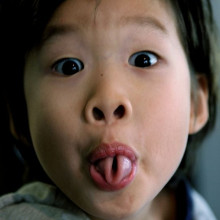
11:09 - Myth: Your tongue has 'taste zones'
Myth: Your tongue has 'taste zones'
with Kat Arney, The Naked Scientists
What's your favourite flavour? Sweet? Salty? Or maybe the mysterious umami? This week Kat Arney has been tackling a tasty mythconception about the tongue.
Kat - If you cast your mind back to school biology lessons, you may remember seeing so-called 'taste maps' of the tongue, showing how we sense sweet tastes with the front of the tongue, salty with the sides of the tongue just behind, sour with side patches behind those, and bitter with an area right at the back. Then there's umami, the so-called 'fifth taste' found in savoury flavours such as parmesan and anchovies, which is thought to be located in the centre.
This seems kind of logical, but if you've ever touched a salt and vinegar crisp with the tip of your tongue and felt that salty-sharp tang, you'll know this can't be true. So where did this myth come from, and what's the real story?
It all started more than a century ago with a paper published by German scientist David Haenig in 1901. He'd been investigating whether different regions of the tongue were more or less sensitive to different tastes, by dripping different flavours across the tongue and seeing how much of each was needed to provoke a response. Perhaps unsurprisingly, given that taste buds are concentrated at the tip and sides of the tongue, he found that the tip and sides were more sensitive to all flavours, all the way round, showing his findings in the form of a rather confusing graph.
Four decades later, US psychologist Edwin Boring took a bit of artistic licence with Haenig's data for a textbook that he was writing about sensory perception, portraying it as a map of the tongue with regions of different taste sensitivities - sweet at the tip, salty and sour at the sides and bitter at the back. This map quickly became accepted as scientific fact, and still persists in classrooms and books around the world today.
The truth is so easy to reveal that it actually makes a nice school science experiment - simply blindfold a willing participant, then gently swab different areas of their tongue with cotton buds soaked in different solutions - sugar water, salt water, vinegar and tonic water (which contains bitter quinine) - being careful not to make them gag, of course. Scientists now know that tastebuds all over the tongue can detect all five of the main flavours, not to mention some other sensations too such as the fiery burn of a chillie pepper.
But according a paper published in the journal Science in 2011, there is one part of the body where different tastes are recognised by different areas, and that's the brain. By dripping different liquids on the tongues of anaesthetised mice, the researchers discovered that distinct bits of the brain 'light up' with fluorescent dyes that reveal nerve cell activity in response to sweet, salty, bitter and umami tastes - but, intriguingly, not when they tested sour liquids. Their findings are controversial, as they conflict with results from other types of tests, but they do suggest that the taste maps we should be drawing are in the brain rather than on the tongue.

14:36 - The phone encryption debate
The phone encryption debate
with Peter Cowley, Angel Investors
There has been a fierce debate raging for the past month in America, as the FBI were in a high stakes legal battle with tech company Apple as they needed them to break into a phone. The court-case was dropped once the FBI found another way to hack the phone, but now Apple have hit back and are saying they will be able to find and fix this gap in security. Naked Scientists tech-wizard Peter Cowley joined Connie Orbach to go through this debate, and what this means for the average phone user...
in a high stakes legal battle with tech company Apple as they needed them to break into a phone. The court-case was dropped once the FBI found another way to hack the phone, but now Apple have hit back and are saying they will be able to find and fix this gap in security. Naked Scientists tech-wizard Peter Cowley joined Connie Orbach to go through this debate, and what this means for the average phone user...
Peter - Yes, it's been in the news quite a bit. It was because there was a very nasty terrorist incident in San Bernadino at the end of last year. There was a gun fight and both of the perpetrators were shot but they had a number of mobile phones too which they crushed, but one was found. On that phone - you're probably aware of how much there is on a phone nowadays. On a smartphone there may be emails, there may be phone calls, there may be text messages, there will be Location there will be Whatsap. The location itself might be very relevant and that's why they wanted to get in to continue the investigation.
Connie - How was the phone in question - an iPhone - encrypted?
Peter. Yes. In fact, it was an older iphone - it was a 5C which came out about three or four years ago and that only uses software encryption. The newer ones use hardware encryption as well in a really clever way where there's a separate processor embedded on the main computer which acts as the encryption module below the software, so that it's actually using some other software which is completely independent of the software that can be got at by somebody who's trying to hack into it. On top of that it's got specific encrypted hardware between the main memory and the flash memory. So that's the encryption but also, of course, you do need to get into it so you put a passcode into it and they've got software in there that stops you putting your passcode in too many times, otherwise it will actually delete all the memory and it takes a bit of time to do that. In fact, what the FBI were trying to do was to ask Apple to speed that up and remove the maximum number. It works out that if you put a 13 digit passcode in, it will still take 12,500 years to try all the combinations.
Connie - And what was the stance of Apple when they refused to break in?
Peter - First of all they gave a few clues on how to do it. They said go round to the wi-fi system and switch it back on again in the house they were renting and it should back itself to the iCloud. Unfortunately, something had happened in between to do with the person who owned the iphone that meant that they couldn't get any data off that. So at that point then Apple were asked whether they could break into it and they said no. And they said no, basically for a number of reasons, but the most important one is would effectively set a legal precedent. It would allow the government or law enforcement agency to ask them to get into any phone at that point. They also said that if it got into the wild, their method of breaking in, it could be used by criminals then so anyone could get into any phone.
Connie - But it appears the FBI found a way in anyway - how can this affect the rest of us who don't feel like we've got anything to hide?
Peter - We have got stuff to hide haven't we? We've got things like pin codes, passwords, bank account details. Now obviously we shouldn't put that on our phones but I'm sure plenty of people do, and if you were to put that on your phone and not lock it, you've got a device there that's lost in the street that will give access to all kinds of things. So you've got partly that and partly the fact that if somebody wants to target you as a criminal and starts to understand what your movements are, where you've been, etc., they can plan something. They can plan potentially for when you're not at home because you've gone to work. So there is data on there which is of use to criminals so although we might feel and know we are not criminals ourselves, there is something on there that could be used by the criminal fraternity. Really there's a conflict between the amount of privacy you want to keep and what the security forces and the government need to know in order to protect ourselves. So really you're comparing a conflict between our own privacy and society's benefit and that shouldn't be decided by one particular case. It should be decided at a very high level by discussion, and if you look at the States, the tech companies would definitely want the privacy but the senators and congress are not quite sure. They did a survey actually and there was 50% on the side of Apple and 45% on the side of the government so the population doesn't really know.

19:02 - The unlikely mathematical genius
The unlikely mathematical genius
with Professor Catherine Barnard & Adam Perkins, University of Cambridge
Srinivasa Ramanujan was born in a small village outside Madras, India. And in an unlikely turn of events this man, despite having no formal education, became one of the greatest mathematicians of the 20th century. This week, biopic 'The Man who knew Infinity' comes out to celebrate the man's achievements, just over a hundred years after he came to Cambridge to study under Trinity College's G.H. Hardy. Naked Scientist, Graihagh Jackson has the story...
unlikely turn of events this man, despite having no formal education, became one of the greatest mathematicians of the 20th century. This week, biopic 'The Man who knew Infinity' comes out to celebrate the man's achievements, just over a hundred years after he came to Cambridge to study under Trinity College's G.H. Hardy. Naked Scientist, Graihagh Jackson has the story...
One morning early in 1913 Hardy found among the letters on his breakfast table a large untidy envelope decorated with Indian stamps. When he opened it he found sheets of paper, by no means fresh, on which in a non-english holograph were line after line of symbols. Hardy glanced at them without enthusiasm. He was, by this time, at the age of 36 a world famous mathematician and world famous mathematicians, he'd already discovered, are unusually exposed to cranks. He put the manuscript aside and went on with his daily routine...
Graihagh - But there was something about this letter that was bugging Hardy. On those scripts were theorems he's never seen before. Could this crank actually be an unknown mathematical genius. It seemed unlikely that a young man with no formal training and from a poverty stricken area of India could have solved some of the fundamental problems of mathematics. But, nonetheless, he sent a message to his colleague, Littlewood, to meet him after dinner to go over the letter...
Before midnight they knew, and knew for certain, the writer of these manuscripts was a man of genius.
Adam - We are looking at a letter from G.H. Hardy, the mathematician to Scofield, who was librarian to the University Library, Cambridge.
Graihagh - That's Adam Perkins. He's in charge of all the scientific manuscripts at the Cambridge University Library and he was kind enough to show me some of Ramanujan's letters.
Adam - And Hardy gives an account of letters that he's been able to salvage from his collection of other papers; all from Ramanujan.
Graihagh - And what I thought was really lovely here is that he said sadly he's lost that first letter but actually he's not surprised because everyone was very interested in his case and so he often handed it around to fellow mathematicians.
Adam - It is the case that he'd circulate his letters saying
that this is quite extraordinary. This man I've never heard of before who works in India has sent me this long letter.
Graihagh - They are 15 pages or so long and a lot of it, these mathematical equations, look very impressive but are completely illegible to someone like me.
Adam - Well, indeed. I deal with a lot of manuscripts and I can assure you these are very clear indeed.
Graihagh - All apart from the mathematical equations?
Adam - Well, the actual content is another matter but at least of the content you know exactly what Ramanujan was writing but the mathematical analysis is something quite different, yes.
Catherine - So, after a number of letters, Hardy invited Ramanujan to Trinity and he would have arrived here in front of the great where we're standing at the moment. He would have looked up to see the statue of Henry VIII. He'd have gone through the gate and into Great Court and been stuck by one of the most beautiful sights in Cambridge.
Graihagh - Professor Catherine Barnard. She's a Fellow of Law but also a senior tutor at Trinity College. Now you might be wondering how a Professor of Law has ended up talking to me about maths. Well, as a senior tutor, Catherine is very involved in running the college and so when the production company asked her if they could film at Trinity she thought, I need to know more about Ramanujan.
Catherine - As a lawyer, he's not really crossed my path and so I bought the Robert Kanigel book and really enjoyed the wonderful story about this man who comes from a really very disadvantaged background, gets to Cambridge and does some of the most brilliant maths that has exceptional longevity.
Graihagh - And over a hundred years later, since Ramanujan's arrival, not much has changed here at Cambridge including the iconic Wren Library, which has the only known photograph of the Indian mathematician.
Catherine - What we see in the picture is a rather handsome young man with a rather quizzical expression in his eyes.
Graihagh - This was his passport photo wasn't it?
Catherine - Yes, I think that's absolutely right,yes.
Graihagh - What's really striking to me is actually he's got this Elvis like quiff. Obviously he was before Elvis. But his eyes - he's got such big almond eyes - very white and then very dark pupils. They're quite something.
Catherine - Had the college been mixed he'd have been quite a ladies man but, of course, it wasn't and he only had eyes for one thing and that clearly was maths which was what brought him over here.
Graihagh - What was it like for him?
Catherine - I think he would have suffered terribly from the cold. I think the other thing that would have really struck him would have been the magnificence of the buildings. The Wren Library, where we are, with its magnificent light shining through the windows but also the busts, the bookcases, but also probably rather intimidating if you'd come from a very different background. And I was also rather struck by a quote in Robert Kanigel's book and, if I may, I'll just read you one quote from it.
"In this old town of cobbled walks, grassy courts, and medieval chapels, whole universes away from Madras, Ramanujan had found a kind of intellectual nirvana."
Graihagh - And what made Ramanujan's maths so remarkable?
Catherine - He was a remarkable mathematician. I think his story's so extraordinary that where he came from in India with next to no training and he developed these extraordinary formula.
Graihagh - I mean it's something in the region of 3000 or 4000 equations he put together, most which have been proven right. I mean that's just incredible to me.
Catherine - Presumably the man never slept.
Graihagh - I mean indeed because he lived till he was 30, didn't he?
Catherine - Yes. It was a tragically short life and, obviously, while he got intellectual sucker here, the climate and the food was not good for him. Obviously he suffered quite a lot physically if not mentally and, very sadly, he didn't live much longer than after he returned to India.
Graihagh - It's amazing to think perhaps what he could have achieved had he lived a bit longer.
Catherine - Absolutely, although it's often said that mathematicians are at their most brilliant in their late twenties, early thirties so perhaps we did see the prime but, who knows.
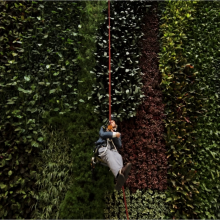
26:44 - A message from Sir David Attenborough
A message from Sir David Attenborough
with David Attenborough
Earlier in the week, the world's first conservation campus officially opened in  Cambridge. The building, which is named after legendary wildlife broadcaster Sir David Attenborough, aims to bring together conservationists from different companies to improve on collaboration. At the grand opening, Sir David had a message for the world about the threat to the planet's species...
Cambridge. The building, which is named after legendary wildlife broadcaster Sir David Attenborough, aims to bring together conservationists from different companies to improve on collaboration. At the grand opening, Sir David had a message for the world about the threat to the planet's species...
David - The natural world is imperiled as never before. During my lifetime, many habitats have been destroyed or degraded and many species have declined in number. This loss not only diminishes the beauty and diversity of the natural world, it also puts our own future in jeopardy. We depend on nature for the very air we breath, for every mouthful of food we consume, for every drop of clean water that we drink.
Audio thanks to Toby Smith.
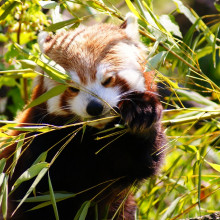
27:36 - Conservation: why care?
Conservation: why care?
with Dr Bhaskar Vira, The University of Cambridge
Conservation is a charity close to many people's hearts, but how many species are we really losing, and why should we care? Dr Bhaskar Vira, the director of the University of Cambridge Conservation Research Institute, joined Connie Orbach to discuss why so much of our planet is at risk, and if there is anything we can do about it...
Bhaskar - The numbers are a little difficult to estimate, because we still don't know how much biodiversity there is out there. Every year, scientists are discovering new species; so it's difficult to know how much we're losing when we don't know how much we've got. But recent research suggests that we're losing species much faster than before humans arrived on the planet, maybe something like a thousand times faster, so the influence of humans on extinctions is distinct and it's really important. If the numbers are correct, we might be losing as much as 10,000 species per year; that's the upper estimate.
Connie - Wow 10,000! But why should I care about some frog in the Amazon that I've never heard of, if it's gone extinct?
Bhaskar - There are probably two ways and two reasons why you should care. One is that that frog might have some important cure that might actually improve the quality of human life. A number of diseases have been addressed by previously-unknown species that were discovered in places like the rain forest. The other reason, of course, is the aesthetic beauty and the importance of nature for its own sake. So it's not only about why the frog matters for humanity, but because the frog is important as a member of the living planet.
Connie - So kind of a basic value system there then? What are the different factors driving species into extinction?
Bhaskar - I suppose the biggest factor is that we're using more resources than the planet generates. The WWF [World Wildlife Fund] has estimated that we're living on one-and-a-half-planets, which means, essentially, to sustain our consumption today we would need one and a half planets! We don't have one and a half planets, so we're running out of what the planet actually has to offer. So those pressures manifest themselves in terms of habitat change, land use pressures, as well as impacts upon the aquatic environment. And that's what nature requires in order to survive; so our human impacts are making that big difference.
Connie - Now, with a growing population that's only going to get worse, and when humans and animals share the same space - what kind of conflicts can occur there?
Bhaskar - There are a number of conflicts that are, essentially, to do with the difficulties of cohabiting in these spaces. As towns grow, there's more demand for housing, green spaces start to shrink. As land and resources become scarcer, industrial agriculture expanding for food production means that there's less forest in some parts of the world and those conflicts are becoming really important. You asked about humans and animals. Increasingly, living next to wild animals is no longer seen as something which is a pleasure but they're pests right on your doorstep: wild elephants trampling on crops in India and Africa; wild predators lifting sheep from shepherds and lifting cattle from cattle grazers. These have become real conflicts that are manifesting themselves today. And it's to do with shrinking space and insufficient space for all these uses.
Connie - Yes I can see, if an elephant's destroying your crops, you might not value it in exactly the the same way we do when you just see it on the TV. So what kind of ways are there of mitigating these conflicts?
Bhaskar - There are two types of things people are talking about. One is to take a good hard look at how we can reduce our own excessive consumption. What can we do to reduce that footprint that humanity has on the planet? How can we reduce our impacts on nature? How can we help people make these choices through information, through imparting more knowledge and, increasingly, through using regulation in the pricing system to try and help people make those decisions. When people introduced a 5p charge on carrier bags, people stopped using quite as many carrier bags because it suddenly started to matter. So there are simple things that we might be able to do. The other, of course, is to try and do more with less. Using technology and innovation to produce more from the finite amount of resources that we have. So those are the two ways in which we should really be thinking about this, both of which would combine to reduce that competition between humans and animals.
Connie - And - very briefly - you were at the opening of the David Attenborough conservation campus earlier in the week, what makes this building so special?
Bhaskar - It's a really unique new conservation campus at the heart of Cambridge that brings together the University with nine leading conservation organisations that are based in Cambridge under the Cambridge Conservation Initiative, and the opportunity to be co-located, to work together is something that's really unprecedented. These organisations and the University have a long history of working with each other. We've been working together in this context for well over a decade. It's unusual in the world because these are often organisations that compete with each other and, of course, what makes it extra special is that Sir David Attenborough has lent his name to this building. So what could be more inspiring?
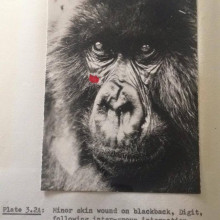
32:27 - Dian Fossey and the mountain gorillas
Dian Fossey and the mountain gorillas
with Georgia Mills, Naked Scientists
Many of the world's most charismatic endangered species are at risk from poaching,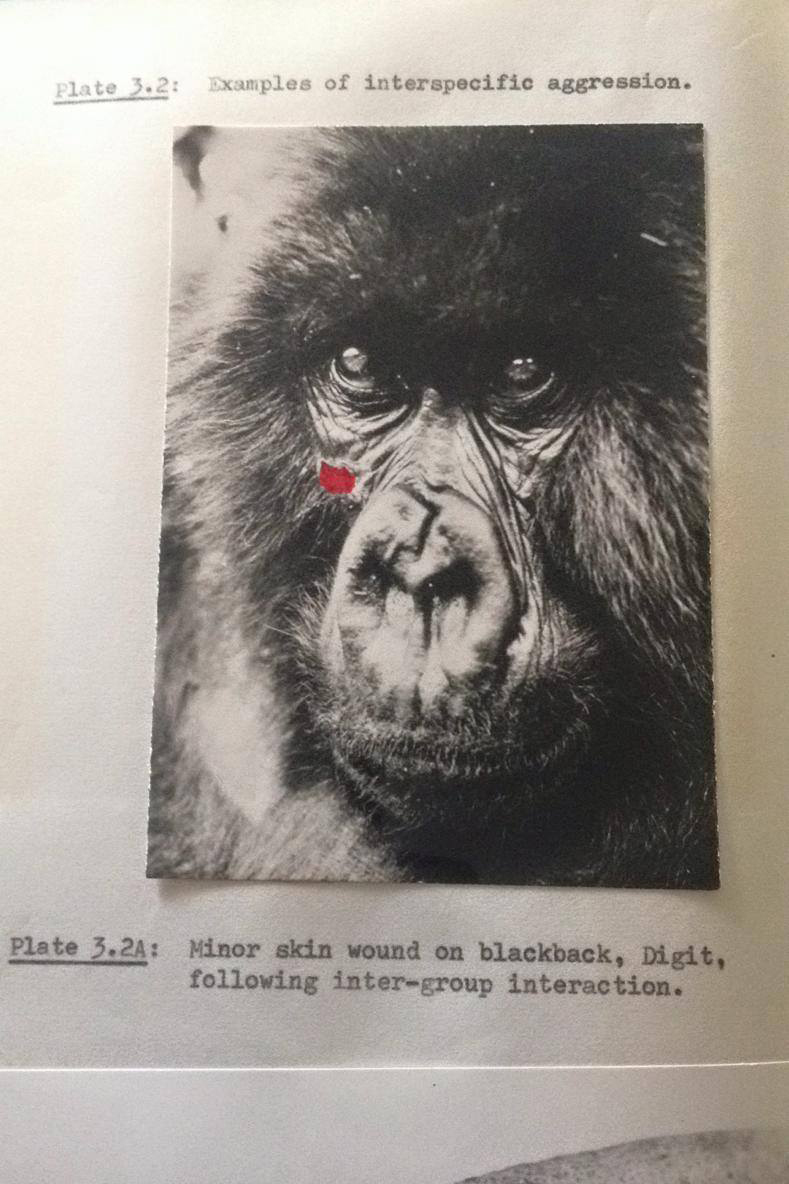 and it is a complex problem to tackle. Dian Fossey devoted her life to researching mountain gorillas, but increasingly got drawn in to a fight against the poachers who kidnapped them. Her dramatic approach to conservation was seen by many as extreme, but was she doing the right thing? Naked Scientists Georgia Mills dug out Dian Fossey's Cambridge PhD manuscript, and took Connie Orbach through her tragic story...
and it is a complex problem to tackle. Dian Fossey devoted her life to researching mountain gorillas, but increasingly got drawn in to a fight against the poachers who kidnapped them. Her dramatic approach to conservation was seen by many as extreme, but was she doing the right thing? Naked Scientists Georgia Mills dug out Dian Fossey's Cambridge PhD manuscript, and took Connie Orbach through her tragic story...
Georgia - Here in the room where we have our tea every day is a massive bookshelf full of people's PhDs from the past and right up there at the top - I'm going to have to get up on a chair - is Dian Fossey's PhD called "The Behaviour of the Mountain Gorilla."
Connie - That is the voice of fellow Naked Scientist, Georgia, who's been investigating Dian's story....
Georgia - Looking through, it's full of photos and graphs that have been stuck in by hand. So this is quite a fantastic artifact really to have where you have your tea each day. And this is from when Dian Fossey was in Cambridge doing her PhD on a very brief stint when she wasn't in Africa studying these gorillas.
Connie - Wow it's beautiful. Yes, you can see that all of the pages have been individually typed.
Georgia - Dian Fossey is a really interesting character. She just decided at the age of about 30 that she just really wanted to go to Africa, she took out a massive bank loan, and just up and left really. And when she was there she met a world famous anthropologist, Louis Leakey, told him about her passion for gorillas and about three years later, he funded her to go out and study these mountain gorillas where they live.
Connie - Wow! Dream job.
Georgia - Absolutely, and I think from reading her biography "Gorillas in the Mist", it sounds absolutely magical. She wrote this about the first time she ever saw them...
"I shall never forget my first encounter with gorillas. Sound preceded sight, odour preceded sound in the form of an overwhelming musky barnyard, human-like scent. The air was suddenly wrent by a high pitched series of screams followed by the rhythmic rumble of sharp 'pok-pok' chest beats from a great silver backed male obscured behind what seemed an impenetrable wall of vegetation."
Connie - She's got quite a knack for description there. So she was a researcher, but we're talking about conservation. How did she move from one to the other?
Georgia - She spent so much time researching these gorillas that she grew quite close to them. She grew to absolutely love them and respect them. These gorillas were critically endangered; there were about 400 of them left and Dian continuously saw signs of them being poached.
Connie - Poaching - that's something I associate with rhino horns, elephant tusks, not really with gorillas. What were they doing with them?
Georgia - Sometimes their hands and their feet would be sold to collectors and also the infants would be captured to be sold as pets. And when this happened, the adult gorillas would fight to the death to basically prevent that, so this could be devastating to a gorilla community. Dian saw this happening and, obviously, was very distressed by it and wanted to stamp this out to save what was a species on its last legs. So she started to organise anti-poaching patrols, destroying any trapper's snares that she found and she'd escort any poachers off the land. And this is something she turned to active conservation but it kind of turned into almost a war with poachers and this was all operating outside of the support of the local community and the government who also wanted to end the poaching.
Connie - So this sounds quite radical - did it work?
Georgia - No, or at least it did not stop the poaching altogether and it made Dian a lot of enemies. Things did not get any better and eventually a gorilla who is actually features in her PhD. There's a photo him here...
Connie - Okay, so this is one of the gorillas that she was working with?
Georgia - His name was Digit and he was one of her favourites, and she found him basically dead with his hands and his head removed and at this point things got really personal, and escalated. There were reports of her using stinging nettles to torture the poachers, kidnapping their children and even pretending to use witchcraft to try and scare people off.
Connie - God, that's very dark - isn't it?
Georgia - It is a dark story and it doesn't end well. This all came to a head and Dian Fossey was found murdered in her cabin one morning. No-one really knows who did it. It could have been a poacher - there are loads of different theories and we might never know for sure. What is known is that she made a lot of enemies.
Connie - That's quite a harrowing story and this is apparently conservation you're telling me. Does it work?
Georgia - Some have argued that if Dian hadn't done what she'd done then we wouldn't have any gorillas left to study today, but this style is generally seen as self-defeating. You can't stop everyone with brute force, and the idea of alienating the locals and operating this kind of war on poaching goes against what is now the general consensus of conservation.
Connie - So she's obviously got quite a story, she's quite well known but the conservation, was that all for nothing?
Georgia - There is a light at the end of the tunnel. What Dian Fossey undoubtedly did do was raise the profile and the understanding of these mountain gorillas that she loved so much, which meant that people all around the world were much more likely to donate funds to support their conservation. And, although mountain gorillas are still critically endangered, there one of the few species whose numbers are actually on the rise.
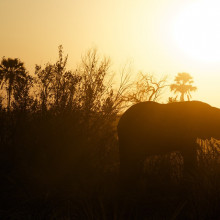
38:18 - How to prevent poaching
How to prevent poaching
with Simon Hedges, The Wildlife Conservation Society
Poaching continues to be a massive problem for animals like elephants and rhinos, with the demand for their tusks and horns rendering them more expensive than diamonds. But are we going about tackling this in the right way? Simon Hedges works for the Wildlife Conservation Society, and he explained to Kat Arney the double pronged approach needed to save some of our most vulnerable species...
Simon - It is a very significant problem for a whole suite of species across most of the planet, unfortunately. Obviously, we hear about elephants and rhinos particularly and scary statistics like a hundred thousand elephants killed in three years across Africa 2010-2012. Thousands of rhinos being killed. We're losing populations and we're losing range of a lot of species and, of course, a lot of species are threatened by poachers to the extent that they actually go extinct in some places.
Kat - In the case of the mountain gorillas, they were being poached for their hands, their feet, their babies were being taken. In the case of the other species, obviously we get rhinos being poached for their horns, elephants being poached for their ivory. Is it this kind of medicinal and valuable use that makes people want to poach these animals?
Simon - Very much so in the case of those species with the price of rhino horn more than cocaine or even diamonds, and people can make a tremendous amount of money with very limited investment of time. Obviously there's a risk, a tremendous risk, they might lose their lives but given how poor some people are across the range of the species, there's a temptation. But more significantly, I think, it's not just poor people - I think that's a very important point to get across. What we're increasingly seeing is organised criminal syndicates involved in the poaching and the trafficking of ivory and of rhino horn, and it's the involvement of these groups, particularly, that has led to the crisis we're seeing for elephants and for rhino right now, in the last decade or so.
Kat - This is big stuff if there's organised groups doing it. How doe we fight it? What are the ways that some people are trying?
Simon - There are a number of tools in the arsenal if you will. Probably the two key things are to secure the key populations of elephants, rhinos, and all the other species that are affected by poaching in the sites they live in through much more sophisticated and much more people-friendly poaching operations than those you were talking about with the Dian Fossey story, obviously one needs local people on side. And it's important to recognise that local people are often threatened by these armed poaching gangs as well. Their local security, their livelihoods are undermined. So it's possible to have a win-win situation where anti-poaching operations that are done in a sensitive way and not criminalising the local people, can actually benefit those local people as well as protecting the populations of wildlife we're interested in.
Kat - As well as getting the local population involved, are there any more hi-tech ways that people can try and stop poachers or do we just need better fencing?
Simon - I don't think it's really a question of fencing. Fencing doesn't have a particularly useful role in anti-poaching, I don't think. Because poachers can easily cut the fences and, indeed, in many places poachers use fencing wire to make snares. Poaching can be combated through better equipped, better managed, better paid, better motivated rangers whose sacrifice is recognised by the global community. There are possibilities of using things like drones and other hi-tech tools but, essentially, it does come down to motivated people, properly trained to do the job.
Kat - So those are 'boots on the ground' kind of approaches, but what about just stopping the demand for these products?
Simon - Yes, absolutely. Two ends of the trade chain, if you like. The poaching end and the demand end are the key ends of the trade and, obviously, poachers are trafficking ivory in between but there's many, many routes that contraband can be smuggled. It's rather like water, it takes the path of least resistance. So the key thing to do is reduce the demand and reduce the consumption of ivory, and rhino horn, and these other products in the main markets, which for ivory and rhino horn are China and Vietnam and other countries in the far east, to a large degree.
Kat - How can that be done? I mean if you just say, this is all completely illegal, you shouldn't do it anymore. Is that the only way we can do it through basically making this stuff illegal?
Simon - Currently, actually, it is legal to trade ivory in many countries around the world in the domestic sense. There's local markets and it's perfectly legal to go into London and buy ivory, as it is in Beijing or many other countries. So domestic bans to complement the international ban is definitely part of the jigsaw puzzle and part of the suite of tools we need. But, if you just ban something, you potentially just push the demand underground, like with prohibition with alcohol. So what one also needs to do is to actually educate people and effect behavioural change so that the desire to have those products is reduced. And this has happened before in an number of countries which used to be major players in rhino horn and ivory poaching and consumption are no longer implicated. So we know that demand reduction, consumption can be reduced through a combination of education, awareness raising, and legal approaches.
Kat - We have heard recently that South Africa is considering re-legalising rhino horn. That would seem to fly in the face wouldn't it - very briefly?
Simon - Yes, international trade remains banned. South Africa can request, but I think an opening of international trade in rhino horn, I think, is tremendously unlikely to be successful in that request at the CITES meeting (the wildlife trade meeting) in the autumn of this year. I think most people think that they will be unsuccessful in that request.
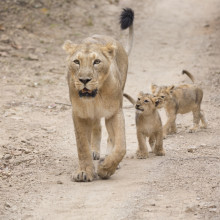
43:59 - Living next door to lions
Living next door to lions
with Gitanjali Bhattacharya, ZSL London Zoo
In places, living alongside animals is unavoidable, which can cause people and 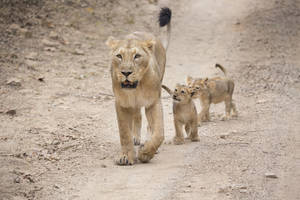 animals to come into conflict with each other. But there are some success stories. India, one of the most densely populated countries in the world has hundreds of Asiatic lions living very closely with people in an area called the Gir Forest. And apparently, this causes no conflict. To find out why, Georgia Mills hopped over to ZSL London Zoo, who are working closely with the people of the Gir to conserve these lions...
animals to come into conflict with each other. But there are some success stories. India, one of the most densely populated countries in the world has hundreds of Asiatic lions living very closely with people in an area called the Gir Forest. And apparently, this causes no conflict. To find out why, Georgia Mills hopped over to ZSL London Zoo, who are working closely with the people of the Gir to conserve these lions...
Gitanjali - I'm Gitanjali Bhattacharya and I'm the programme manager for South and Central Asia at the Zoological Society for London. This is the high street from Sasan Gir which we have recreated, so you've got a little snapshot of what life would be like to live really close to the edge of Gir forest in very close proximity to lions.
Georgia - It is a bit like stepping abroad for a second. There's sort of a market stall with loads of sandals, there's a mural with a painting of a lion, and then right next to us (well, behind glass) is where the lions live. All very unlike what I'm used to at the zoo.
Gitanjali - It's a very immersive exhibit and we've taken elements right from the conservation project and had teams come back and visit us in the Gir and taken snippets of it. So right here where we are standing is essentially the station platform, and for those of us who've been out there, essentially it's like being on the station platform in Sasan.
Georgia - Having lions roaming around the train station is not something I've ever really thought about on my commute to work. But having an enormous predator as a next door neighbour is a reality for people in many parts of the world. Lions are living closer to farmland than ever before which leaves farmers at risk of having their livestock killed and the lions at risk of being shot in retaliation. But apparently this conflict does not occur in the Gir, so what's going on in this patch of India that's so different.
Gitanjali - For me the Asiatic Lion story is is one of the greatest success stories for carnivore conservation anywhere in the world. We often hear about lions coming into conflict with humans in Africa and also big carnivores coming into conflict (even tigers) coming into conflict with humans in India. Whereas for these lions you have a local community in and around these areas that revere and worship the lions in their midst. You've got a very committed government that's doing everything it can to protect these lions.
Georgia - You mentioned respect. They have respect for these lions but respect alone isn't enough to stop a lion from eating you or stealing your crops, so what else is going on here to keep this working?
Gitanjali - You have local communities that can tell lion behaviour very closely just from observing them. Just a flick of a tail or just the way that a lioness may look up. The local community knows when the lion or lioness last hunted so they're very, very attuned to the ecology of the species. And what they do is they put their most productive livestock into the centre of this herd and put their unproductive cattle on the outside, essentially surrounding this, and that basically avoids conflict because they accept the fact that they're going to lose some heads of livestock, but it is their most unproductive livestock and, therefore, you avoid the situation of conflict.
Georgia - Talking with Gitanjali there were two words that kept coming up - special and unique. And the relationship the locals have with the lions, a spiritual and religious one, is special, it's not seen elsewhere in the world really but it has a key part to play in this lack of conflict. So can this really be a conservation success story if it can't be replicated elsewhere? Well the lions in the Gir may be an exception to the norm but Gitanjali feels that key lessons like working with local communities and education can be applied elsewhere...
Gitanjali - There's also daily lessons that we're learning in terms of rescue and rehabilitation of large cats. Leopards are a big issue around this area. So the lessons that we learn from the rescue and rehabilitation and movement of these large carnivores, lions and leopards included, are lessons that we're taking to the conservation projects that we do in other parts of the world, particularly in South Asia, which have a very similar cultural context.
Georgia - Whether these lions are a conservation anomaly or not, I still wanted to see one so we went on the hunt...
I can spot a lion. We've come through the high street under the temple looking bit and we've just approached a beautiful golden-brown lioness prowling the territory. Who's this?
Gitanjali - So this is Heidi here who's one of our oldest lionesses and there's two twins, Indi and Ruby, who you can hear.
Georgia - Is that them roaring?
Gitanjali - Yes.
Georgia - That fantastic! I don't think I've heard a lion roar before, so I'm very happy.
Gitanjali - Well you can hear lions roaring from about 5 kilometers away so it's quite a powerful sound and I think you can sort of hear it echoing in your chest. So very, very, special sound indeed. You cannot help but be amazed by the fact that you're just standing so close to a large predator.
Georgia - Predator indeed, seeing this lion up close really hammered it home that this was an animal you really wouldn't want to mess with, and while I was safe behind glass, that is not the case for the people who live in the Gir forest...
Gitanjali - So this is one of the Malhari huts and these are the people that live in the forest and I just find it astonishing how close some of these children get to Asiatic Lions. I know if my six year old got anywhere that close to lions I would be terrified.
Georgia - And there you have it. These lions can kill people so what if the worst happens, how do you reconcile the need to save these animals from extinction against a human life? Again, these lines to be something of an anomaly.
Gitanjali - It's a really interesting story in the Gir and, actually, you have to be there to be able to imbibe the culture of the people as well as to be able to understand the deep and enormous amount of respect that they have for these large predators. I have been in Gutrath when there have been instances of a 25 year old being killed and the chief wildlife warden got called and out and he went instantly. There was a huge media frenzy around somebody so young being killed by a lioness and it was actually extraordinary, given the fact that somebody so young had died, that the people in the community were averse to this lioness being removed from their field, from within them, because the lioness had had cubs and the local community felt very much a sense that it belonged to their community, and essentially protested against this lioness being moved just because somebody had come too close to it and didn't respect the boundaries that they believe in.

Why does spicy food make me hiccup?
We put Lebohang's question to Clemency Booth, who started by explaining what hiccups are...
Clemency - Hiccups are produced by repeated involuntary contractions of a hemidiaphragm, that's one half of your diaphragm and your intercostal muscles, that's the muscles between your ribs. This muscle contraction results in a sudden inspiration and forces the glottis shut, thereby generating the characteristic hic sound. Hiccups are an involuntary reflex which don't involve the brain, which means that we don't have to think about what we are doing, they just happen. Any process that interferes with the neural pathway'sinvolved in hiccups can trigger them.
Connie - Okay. So, a reflex reaction of our ribs and diaphragm pushes air up forcing the closing the glottis or the space between our vocal cords. Now that's all well and good but what about spicy food and is this even a phenomenon? On Facebook, Christina Alegria said "no hiccups here", whilst a straw poll in the Naked Scientists office suggested a two to one ratio - no hiccups to hiccups.
Clemency - The most common cause of hiccups is detention of the stomach by a large meal. This is thought to put external pressure on the diaphragm, irritating it and causing it to contract. So it may be that those of us that tend to eat quickly, such as when we've ordered a delicious spicy takeaway, may be more likely to develop hiccups. It is also well known that spicy food can cause heartburn or acid reflux, and this has also been linked to hiccups. There are two hypotheses of why this may happen. The first is that spicy food causes us to belch and this again causes distention of the stomach and irritation of the diaphragm. The other feasible cause could be that spicy food increases acid production in the stomach, irritating the nerves that are involved in the hiccup reflex.
Connie - So may be it's speedy gobbling or a propensity to heartburn but once we have them, please tell us there's a cure.
Clemency - Although there is no sure cure for hiccups, there are many things that are said to help. These include: holding your breath, scaring someone, or even biting lemons. My mum always told me that drinking out of the opposite side of the cup would help, but I'm not sure this ever worked. I would advise a combination of all techniques to find out what works for you.
- Previous What's in your genes?
- Next Why does spicy food make me hiccup?









Comments
Add a comment